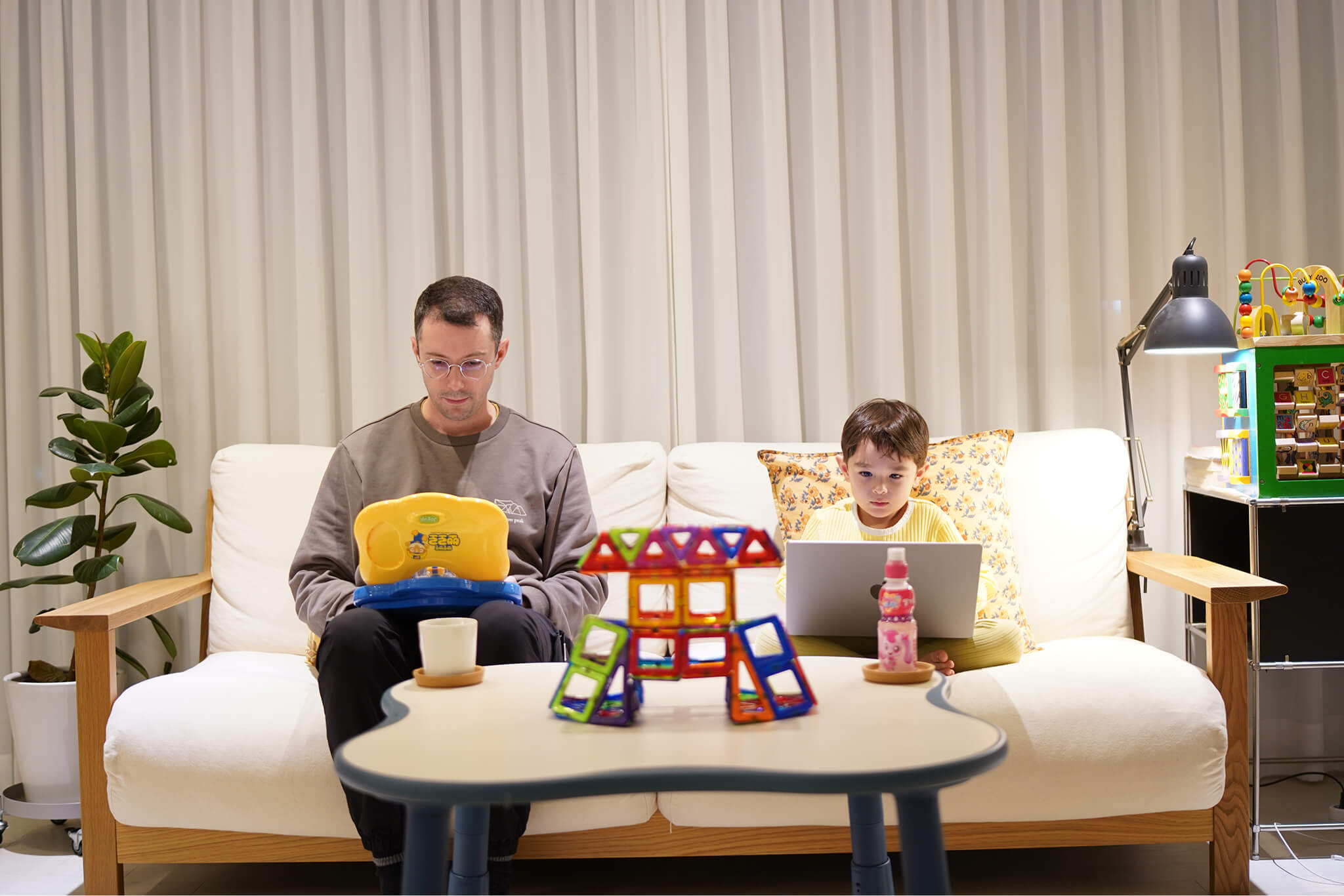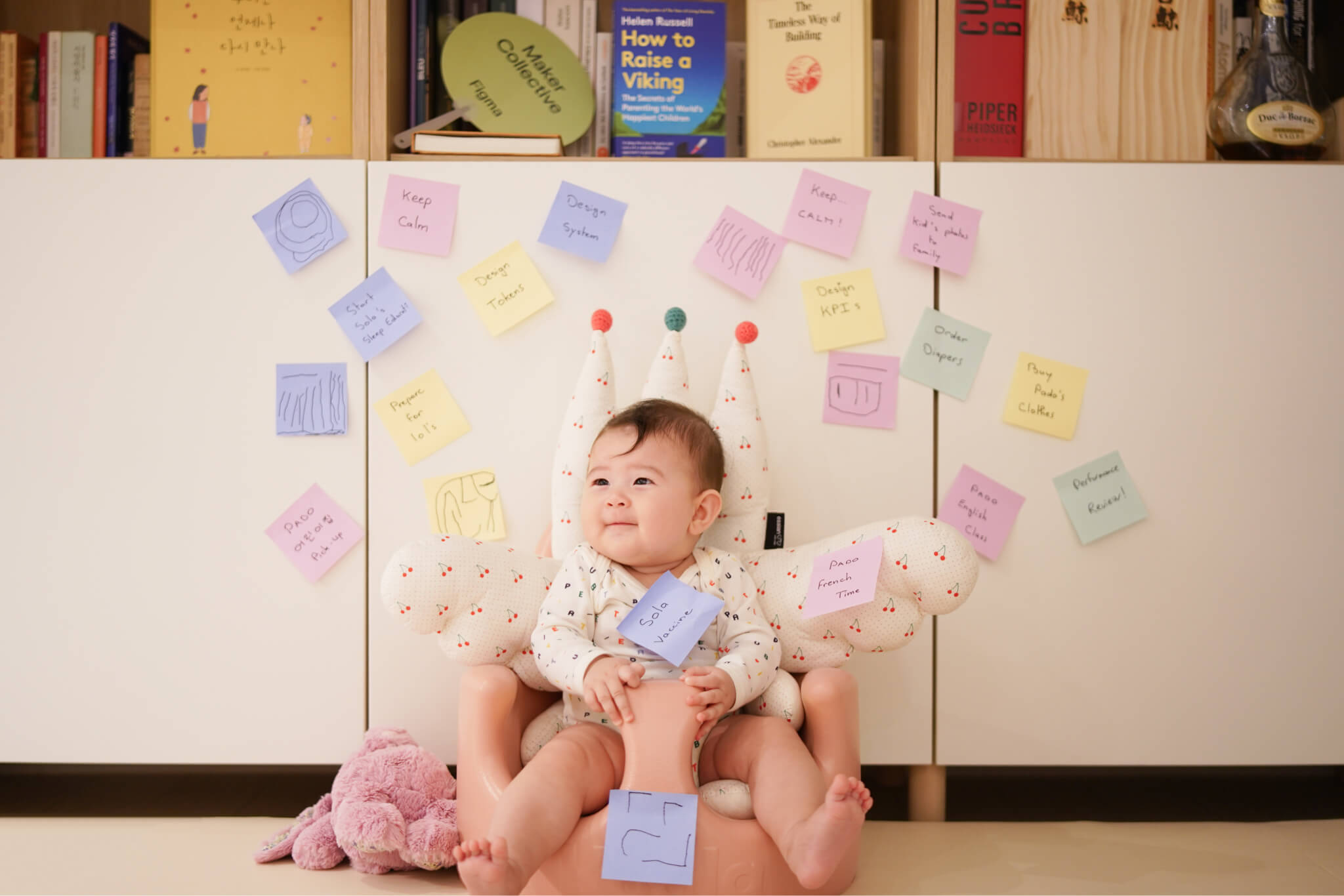
Life in Sprint Mode: Raising Two Kids While Working at a Hyper-Dynamic Korean Startup
- 4 minutes readThe house wakes up before the city does, and by the time I open my laptop, I’ve already negotiated breakfast, socks, and small acts of rebellion. Mornings start with spilled milk; evenings end with unread messages. Somewhere between product reviews and bedtime stories, things blur together: noise, laughter, Slack, Lego. It’s not balance, but a kind of rhythm. Imperfect, fast, sometimes ridiculous, and strangely, it works. But how?
⸻
Life Is a Long Quiet River
My six-month-old daughter caught a cold yesterday. She woke up every hour and a half last night, crying to be held as she discovered what it means to breathe through a stuffed nose. My three-year-old son decided that 5:30 a.m. was a good time to start the day. I disagreed, silently. So I ended up half-asleep on his bedroom floor, surrounded by Lego, trying to play and rest at the same time.
What follows is a beautiful mess: breakfast negotiations, missing shoes, quick showers, everyone somehow ready to face the day. I drop my son at daycare and literally run to the office to be there by 8:30. My daily sprint begins, now in work mode, outcome-focused, eyes on the metrics. It’s hard, but manageable.
Raising kids is hard everywhere. It tests your patience, empathy, and sense of control all at once. But somehow, I’ve managed to find a rhythm that makes it not only bearable, but fulfilling. Not because I have superpowers (outside my kid’s bedroom, I don’t), but because I’ve learned to choose the right setup, the right environment, culture, and mindset to make both work and life grow together.
⸻
Million Dollar Baby

Unicorns are usually defined by valuation. Reach $1 billion and you earn the label. But there’s another kind of rarity: a workplace that scales fast without stiffening, where autonomy isn’t a buzzword but the operating system.
After more than a decade in the Korean tech scene, I’ve come to realize that autonomy is not a luxury, it’s the foundation of real performance. When people are trusted, they take ownership. When they can speak up, they solve problems faster. And when information flows freely, alignment happens naturally.
That openness and trust have been essential to me, not only as a designer and leader but also as a parent. They allow the mental space to be present, both at work and at home. They remind me that performance isn’t about control, but about context.
⸻
High-Output Management
If you’ve read this far, you might imagine that this kind of freedom slows things down. It doesn’t.
In 2024, Buzzvil recorded ₩101.2 billion (about US$71 million) in revenue and ₩4.4 billion (US$3 million) in operating profit. With around 120 employees, that’s roughly ₩639 million (US$460,000) in revenue per person, an unusually high level of productivity in Korea’s IT industry.
Part of this efficiency comes from how much we’ve embraced technology, especially since the AI boom. Designers now work daily with GPT Plus, Midjourney, and Cursor. These tools don’t replace creativity; they extend it. They remove friction and repetition, giving us more time for the kind of thinking that actually moves the needle. AI isn’t “the future of work” anymore, it’s part of the present workflow, and a surprisingly human one when used right.
The rest of it comes from culture. There’s no corner office. Leadership sits among everyone else. Information is open. People challenge ideas, not titles. In a country where hierarchy often dictates conversation, this flatness feels quietly radical. It also happens to be extremely efficient.
It turns out that autonomy, trust, and the right tools can produce not just high output, but a calmer kind of focus that leaves space for life outside the screen.
⸻
Yes We Can

There’s nothing heroic about it. Just the daily work of trying to build meaningful things while raising small humans, staying curious, and keeping a sense of humor.
Some days are loud and chaotic; others feel strangely peaceful. The mix changes, the rhythm holds. It’s not balance, it’s movement, sustained by trust, empathy, and the quiet acceptance that life doesn’t pause for work, and work doesn’t stop for life.
And maybe that’s the real measure of success. Not the revenue, not the growth, but the fact that it still feels human.
⸻
Two Books Worth Reading
I’ll end with two books that have shaped how I think about both work and life.
The Timeless Way of Building by Christopher Alexander (1979). It’s not about AI, yet it explains everything about AI, about patterns, emergence, and how beauty can arise when systems are built with empathy.
How to Raise a Viking by Helen Russell. A warm, grounded book about raising happy humans, and a reminder that growth, whether at home or at work, starts with trust and freedom.